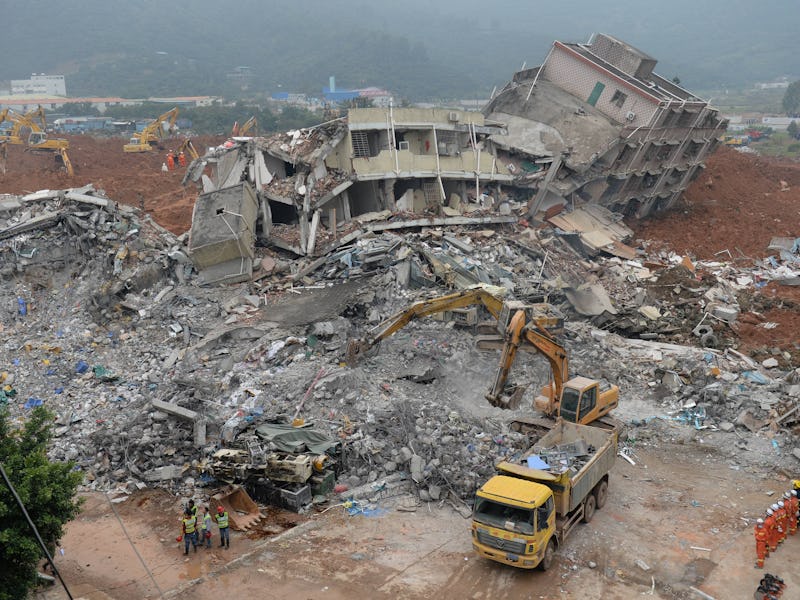Drone Footage Captures Devastation of Shenzhen Landslide
A massive landslide ripped through Shenzen, China on Sunday. Here's some aerial footage of the aftermath.

What looks like a lake of red dirt coats a large industrial park in Shenzhen, China, after an enormous landslide wiped out 33 buildings and displaced hordes of people Sunday.
Drone footage from the 94-acre area shows a fleet of bulldozers scraping away what had been a deluge of loose dirt and construction debris, trying to find any trace of a reported 85 people who are still reported missing as of Tuesday.
The city of Shenzhen has long been the subject of an official state project of economic rejuvenation, and can be seen as a microcosm of the Chinese government’s urbanization scheme over the last 40 years.
The pace and scale of commercial development in Shenzhen destabilized ground and gave way to the catastrophe on Sunday. A massive pile of construction refuse lying just beyond the city collapsed and rolled downward.
The once vibrant landscape is now coated in a monochrome shade of dirt.
According to reports from China, the landslide smashed into apartment complexes as residents fled in a panic. Footage from Closed Circuit Television captured crumbling buildings and dense plumes of dust rising from the wreckage:
Denizens of Shenzhen had long feared the consequences of rapid urban development and had witnessed its pitfalls throughout China for years. As construction firms cluttered various cities with high-rise buildings, piles of debris have grown just beyond various residential dwellings, presenting potential disasters-in-the-making across China. The New York Times reported that many Shenzhen residents viewed the landslide as something almost expected, but still widely feared.
Although the Chinese government has instituted formal initiatives to curb the occurrences and consequences of natural disasters, issues of landslides, catastrophic earthquakes, and chemical explosions have still posed a drastic threat throughout much of 2015, especially for the majority of Chinese currently living in urban centers.